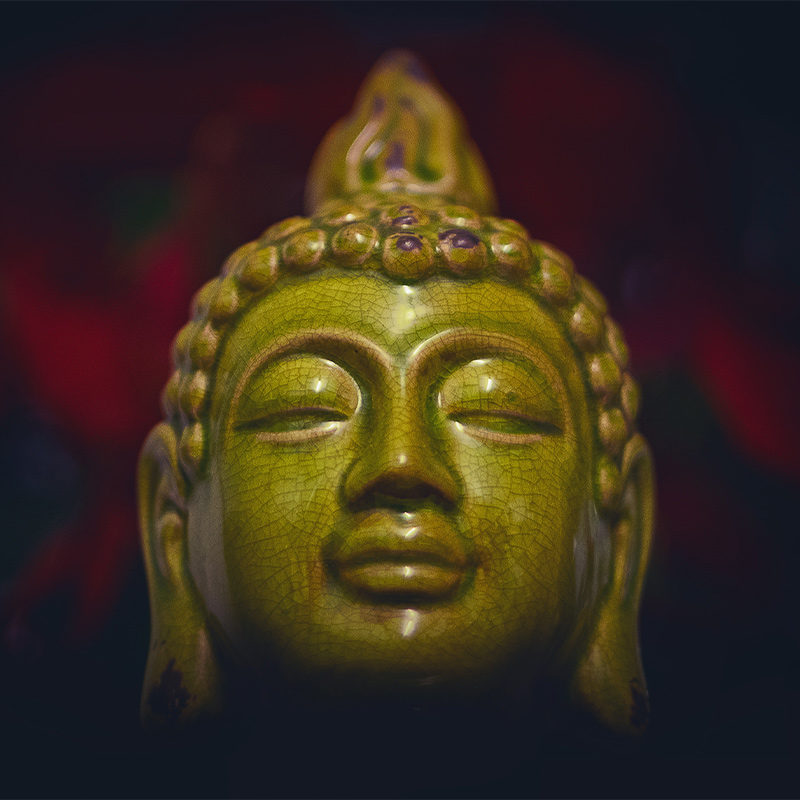Many cultures around the globe and throughout the history of humanity have believed in a form of energy, called subtle energy. Subtle energy is different from electromagnetic energy, which is the energy we use to broadcast our favorite shows on TV, charge our cell phones, and power the rest of our world. It is believed that subtle energy can transfer between objects and people in a process called “energetic imprinting.”
Does evidence for energetic imprinting exist? One study found that a Buddha relic – a crystal-like object that reportedly contains parts of Buddhist spiritual masters’ consciousness and subtle energy – could energetically imprint its energy into the space of a room where it was located. In this study, three different types of detector systems measured the imprinting effect in a quantifiable, predictable, and reproducible way. The results suggest that simply placing the relic in a room — and asking it nicely with a specific intention — can cause energetic imprinting. This work is in line with our previous research showing that positive intention can have measurable effects on physical systems.
Clairvoyants, who are individuals that report being able to perceive events or objects beyond the reach of the ordinary senses, claim to be able to detect subtle energy. So, we were curious: could a clairvoyant detect a concealed Buddha relic? That’s what we set out to explore.
Study Aim
In our newly published research, we investigated whether professional clairvoyants could detect a hidden Buddha relic’s presence.
Study Design
We recruited 4 self-identified clairvoyants who had over ten years of professional experience. As control participants, three of our laboratory staff, who do not consider themselves to possess clairvoyant skills, participated in the study.
The experiment was conducted in an electromagnetically shielded room that contained ten identical, empty, opaque containers placed on a table. The Buddha relic was placed in one of the containers and the clairvoyants had to guess which container was the correct one, or the “target.” Before the actual test, the clairvoyants were individually brought into the room to familiarize themselves with the subtle energy of the relic. After this assessment period, the clairvoyants exited the room and a researcher placed the relic in one of the containers (randomly selected by a computerized random number generator). Then, this researcher would exit the room, and a different researcher would escort the clairvoyant back into the room to guess which container held the relic. The clairvoyants never opened the lids or touched the containers during the assessment or experiment. This process was repeated 10 times for each clairvoyant.
What did the Study Find?
In this study, four or more correct (40% or higher) responses would be statistically significant.
Despite the fact that all the clairvoyants in the study reported that they could detect discernible subtle energetic perceptions specific to the relic (and thus distinct from the empty containers), none of their responses were above chance level, and neither were the controls. In other words, the clairvoyants were not able to make at least four correct guesses about which container held the Buddha relic.
What Does it Mean?
Although previous research has shown that certain detector systems can measure subtle energy changes in physical spaces from a Buddha relic, we were not able to show that clairvoyants could correctly guess the hidden location of a Buddha relic at levels above chance in our study.
Using conventional scientific methods to research subtle energy is in its infancy. Because of that, we still need to work out the optimal way to study this phenomenon.
There could be a number of reasons why we didn’t find our expected results, and we can improve our future research in a few ways. For example, since subtle energy can imprint on objects and locations, in future studies we might clear the room and containers of previous subtle energy before the study begins. Future research might also use detector systems to verify that the Buddha relic does indeed emit a discernible signal, either before the study or in conjunction with the clairvoyants, as a source of validation.
In our study, unlike the previous research, we didn’t use a specific verbal intention request directed at the Buddha relic. It may be important to include specific intentions in future research, although this would still not explain why the clairvoyants in our study reported that they could detect the subtle energy of the Buddha relic, but were ultimately not able to correctly guess where it was located. In any case, asking nicely can’t hurt.
Lastly, humans are imperfect measurement devices. There could be a number of unidentified psychological and social factors that influence the clairvoyants’ abilities. Since there is a lot we don’t know about the nature of subtle energy, and how to best measure it, it is very important to conduct much more research so that we can bridge the gap between humans and detector systems that can detect subtle energy.
But that’s exciting! With all the recent modern-day advancements in technology, we are in the best period of time to tackle these questions and elucidate the nature of this mysterious phenomenon. Being able to accurately measure subtle energy has big implications for many aspects of our lives, including making us more aware of how we share our energy and what energy we take on. Let’s dare to imagine a world where we can measure our impact on others and our environments, and as a result, be more mindful of our intentions as we move through life.
